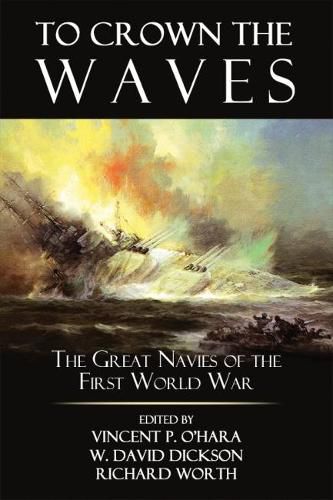Readings Newsletter
Become a Readings Member to make your shopping experience even easier.
Sign in or sign up for free!
You’re not far away from qualifying for FREE standard shipping within Australia
You’ve qualified for FREE standard shipping within Australia
The cart is loading…






The only comparative analysis available of the great navies of World War I, this work studies the Royal Navy of the United Kingdom, the German Kaiserliche Marine, the U.S. Navy, the French Marine Nationale, the Italian Regia Marina, the Austro-Hungarian Kaiserliche und Koenigliche Kriegsmarine, and the Imperial Russian Navy to demonstrate why the war was won not in the trenches, but upon the waves. It explains why these seven fleets fought the way they did and why the war at sea did not develop as the admiralties and politicians of 1914 expected.
After discussing each navy’s goals and circumstances and how their individual characteristics impacted the way they fought, the authors deliver a side-by-side analysis of the conflict’s fleets, with each chapter covering a single navy. Parallel chapter structures assure consistent coverage of each fleet–history, training, organization, doctrine, materiel, and operations–and allow readers to easily compare information among the various navies. Such a study has special relevance today as twentieth-century navies struggle to adapt to twenty-first-century technologies.
$9.00 standard shipping within Australia
FREE standard shipping within Australia for orders over $100.00
Express & International shipping calculated at checkout
The only comparative analysis available of the great navies of World War I, this work studies the Royal Navy of the United Kingdom, the German Kaiserliche Marine, the U.S. Navy, the French Marine Nationale, the Italian Regia Marina, the Austro-Hungarian Kaiserliche und Koenigliche Kriegsmarine, and the Imperial Russian Navy to demonstrate why the war was won not in the trenches, but upon the waves. It explains why these seven fleets fought the way they did and why the war at sea did not develop as the admiralties and politicians of 1914 expected.
After discussing each navy’s goals and circumstances and how their individual characteristics impacted the way they fought, the authors deliver a side-by-side analysis of the conflict’s fleets, with each chapter covering a single navy. Parallel chapter structures assure consistent coverage of each fleet–history, training, organization, doctrine, materiel, and operations–and allow readers to easily compare information among the various navies. Such a study has special relevance today as twentieth-century navies struggle to adapt to twenty-first-century technologies.